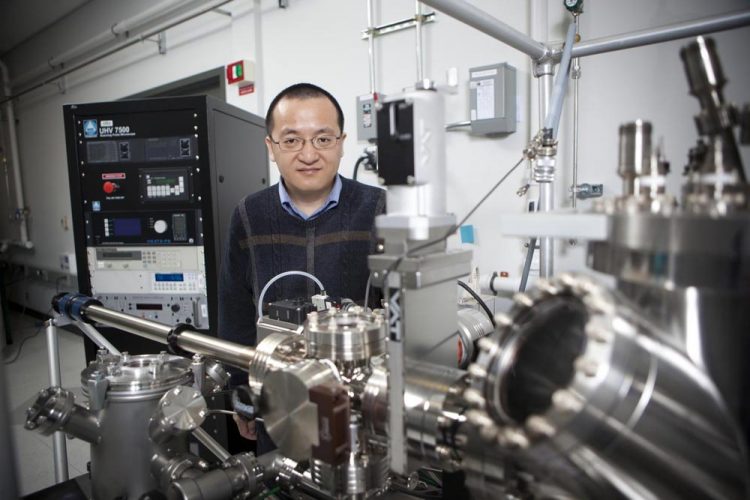New research could aid cleaner energy technologies

Guangwen Zhou is a professor of mechanical engineering at Binghamton University, State University of New York. Credit: Binghamton University, State University of New York
New research led by faculty at Binghamton University, State University of New York, could aid cleaner energy technologies.
The atomic reaction between gases and oxides is a key piece for many technological puzzles. It can lead to benefits such as better catalysts to enable cleaner energy technologies, or to problems like corrosion.
Understanding those interactions isn't always easy, though, and often doesn't go beyond the surface — quite literally.
A team from Binghamton University, the Brookhaven National Laboratory and the National Institute of Standards and Technology — led by Professor Guangwen Zhou from the Thomas J. Watson School of Engineering and Applied Science's Department of Mechanical Engineering — has a new way to look deeper into how gas molecules affect the atoms beneath the surface of a material.
The material studied is cupric oxide, a copper oxide that many researchers are interested in because it is more abundant and affordable than noble metals such as silver, gold and platinum, and it is used for numerous processes such as methanol production.
For the paper “Surface-reaction induced structural oscillations in the subsurface,” published earlier this month in Nature Communications, Zhou and his fellow researchers (including Binghamton PhD students Xianhu Sun, Wenhui Zhu, Dongxiang Wu, Chaoran Li, Jianyu Wang, Yaguang Zhu and Xiaobo Chen) examined the reaction between hydrogen and copper oxide using atomic-scale transmission electron microscopy.
The technique allowed them to see the surface and subsurface simultaneously and in real time, showing that structural oscillations are induced in the subsurface by loss of oxygen from the oxide surface.
“This study shows how the reaction from the surface propagates to deeper atomic layers. We look at it from a cross-section so we can see atoms both in the top layer and subsurface layers more clearly,” said Zhou, who teaches as part of the Materials Science and Engineering Program and also is the associate director of Binghamton's Institute for Materials Research.
This new study is funded by the Department of Energy, in the hope that the results can lead to better catalysts, improved batteries, longer-lasting vehicles and other higher-quality products.
“If we know these reaction mechanisms, we can design better materials,” Zhou said. “We can't care just about the surface but also the deeper layers if we want to understand the process better.”
Media Contact
More Information:
http://dx.doi.org/10.1038/s41467-019-14167-1All latest news from the category: Power and Electrical Engineering
This topic covers issues related to energy generation, conversion, transportation and consumption and how the industry is addressing the challenge of energy efficiency in general.
innovations-report provides in-depth and informative reports and articles on subjects ranging from wind energy, fuel cell technology, solar energy, geothermal energy, petroleum, gas, nuclear engineering, alternative energy and energy efficiency to fusion, hydrogen and superconductor technologies.
Newest articles

Superradiant atoms could push the boundaries of how precisely time can be measured
Superradiant atoms can help us measure time more precisely than ever. In a new study, researchers from the University of Copenhagen present a new method for measuring the time interval,…

Ion thermoelectric conversion devices for near room temperature
The electrode sheet of the thermoelectric device consists of ionic hydrogel, which is sandwiched between the electrodes to form, and the Prussian blue on the electrode undergoes a redox reaction…

Zap Energy achieves 37-million-degree temperatures in a compact device
New publication reports record electron temperatures for a small-scale, sheared-flow-stabilized Z-pinch fusion device. In the nine decades since humans first produced fusion reactions, only a few fusion technologies have demonstrated…





















